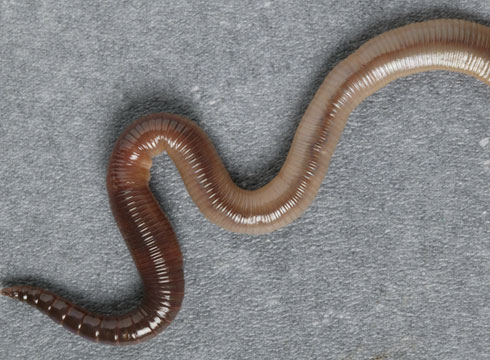Lumbricus terrestris (lob worm)
Sometimes known as the dew worm, squirrel tail, twachel or night crawler, it is common in gardens and parks. You may have come across it in a school biology dissection. It is also a favourite bait worm for anglers.
Lumbricus terrestris was first described by Linneus in 1758 and is the largest UK species of earthworm.
It is preyed upon by the invasive New Zealand flatworm, which has established itself on the west coast of Scotland and in Northern Ireland.
Worms are critical for soil turnover and fertility. They eat dead plant material, and their burrows help aerate the soil and let water through easily. Worm casts (faeces) are rich in recycled plant nutrients that help maintain soil fertility.
Species detail
-

Distribution
Lumbricus terrestris has been spread around the world by settlers and traders. Find out more.
-

Biology
Find out what how this worm reproduces and what Darwin discovered when studying L. terrestris.
-

References
Get more reference information for L. terrestris.
Images

Lumbricus terrestris copulating.
© Dr Kevin Butt, University of Central Lancashire
Lumbricus terrestris.
© The Natural History Museum, London
Lumbricus terrestris.
© Amy Stewart, www.amystewart.comAuthor
Dr Dan Carpenter
Fieldwork Coordinator
Department of Entomology
A word from the author
"I think this is one of the most charismatic of the earthworm species. It has a very different ecology to the majority of UK species and this in my view makes it rather special. It is also probably the species that we know most about."
